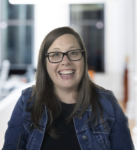
The passage of time has ushered in many changes, including the face of substance use disorders (SUD). SUDs continue to ravage America and the rest of the world, and we are starting to understand that SUDs can affect anyone regardless of age, socioeconomic status, gender, race or ethnicity. SUDs are also no longer just “a big city” issue. Anyone anywhere can be affected by and suffer from SUDs.
Opioids and methamphetamine move to the suburbs.
Once considered an urban problem, opioid and methamphetamine use has steadily crept into America’s suburban areas. What are the driving forces behind this migration? A study in the Journal of the American Medical Association found that misuse of prescription pain medications is a driving force behind suburban heroin use. It also found that newer heroin users are now typically white, older, nonurban and have a history of pain medication misuse (Cicero TJ et al. JAMA Psychiatry. doi:10.1001/jamapsychiatry.2014.366 [published online May 28, 2014]).
Increased opioid use in the suburbs could also be fueling the rise in suburban methamphetamine use since people who use opioids often mix them with methamphetamine to create a “speedball” and increase the high. Methamphetamine can be a highly sought after substitute if opioids are unavailable. The intense focus on the opioid problem has in some ways allowed the problem of methamphetamine use to fade into the background where it is not addressed as intensely.
Research shows that women in suburban settings who use methamphetamine may face more barriers to accessing treatment than men. Many of those barriers are related to gender roles. People in suburban settings face increased health risks from sharing needles since few suburban areas have needle exchange programs.
Suburban marijuana use is on the rise in suburban communities.
Marijuana is one of the most used substances in America. Only tobacco and alcohol are used more. So it is no surprise that its use is popular in suburban areas too. In 2020, all but three states legalized marijuana for medical use, and eleven states also legalized recreational use. This has led to a booming legal cannabis business and many suburbanites are flaunting their use. The Today Show even had a story about “marijuana moms” who claim that marijuana use makes them better parents.
Teens in urban and suburban areas are using marijuana as well, but rates of marijuana use and other substance use were higher in suburban teens. Use among the suburban teens was more strongly related to self-reported maladjustment.
Marijuana use among teens, suburban or otherwise, is problematic because it can cause harm to the rapidly developing teen brain. Use during teen years can lead to difficulties in:
- Thinking
- Problem-solving
- Memory
- Impaired coordination
- Attention difficulties
Alcohol is now a staple of the suburban lifestyle.
One study indicated that people in urban areas who drink were more likely to report excessive drinking than those in suburban areas, but that does not mean that the suburbs do not have their share of excessive drinking. Although overall, men still drink more than women, women are closing that gap as the drinking patterns of men and women are starting to look similar. In addition, suburban wine mom culture is a relatively new trend and could be encouraging women to drink more.
Is there a male version of the suburban wine mom? The Urban Dictionary says yes and it is the beer dad, who is usually a middle-aged male who loves grilling, fixing cars, watching sports and drinking beer. On the surface, the jokes and memes about wine mom and beer dad are funny, but they hint at something darker. The suburban wine mom and beer dad can normalize unhealthy drinking patterns and maladaptive coping strategies.
The ever-growing problem of prescription drug misuse is affecting the suburbs too.
America’s fastest-growing drug problem is not cocaine, designer drugs, methamphetamine or even heroin. It is prescription drugs and this problem is affecting suburban America too. It is hitting adults and teens. It can mean using benzodiazepines to alleviate anxiety, Adderall to help survive an all-night study session and prescription opioids for pain or just for the high. Unfortunately, many people are still unaware of or underestimate the dangers of these medications because they are prescribed.
Treatment for substance use disorders is available.
Sometimes options for substance use disorder treatment in suburban areas can be limited. Seekers of treatment may have to travel further, but the freedom of sobriety is worth the extra miles and effort. There is hope and recovery is possible.
No matter where you live, in the city or suburbia, substance use disorders can wreak havoc on every area of your life and the lives of loved ones. At Casa Palmera, we will make sure you have a solid aftercare plan to guide and support you after leaving our facility. For more information on our treatment options and services, call Casa Palmera today at (855) 508-0473.




